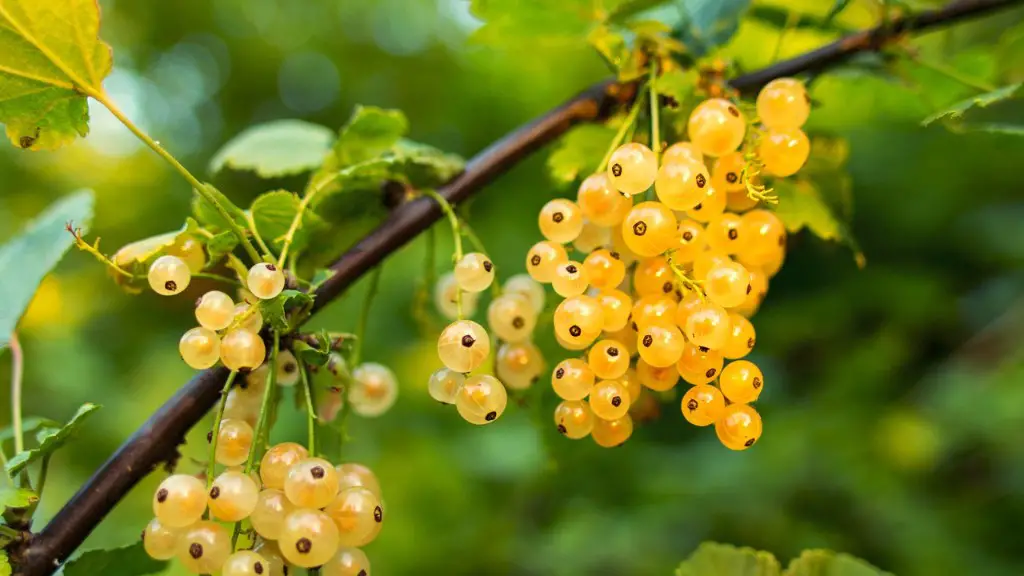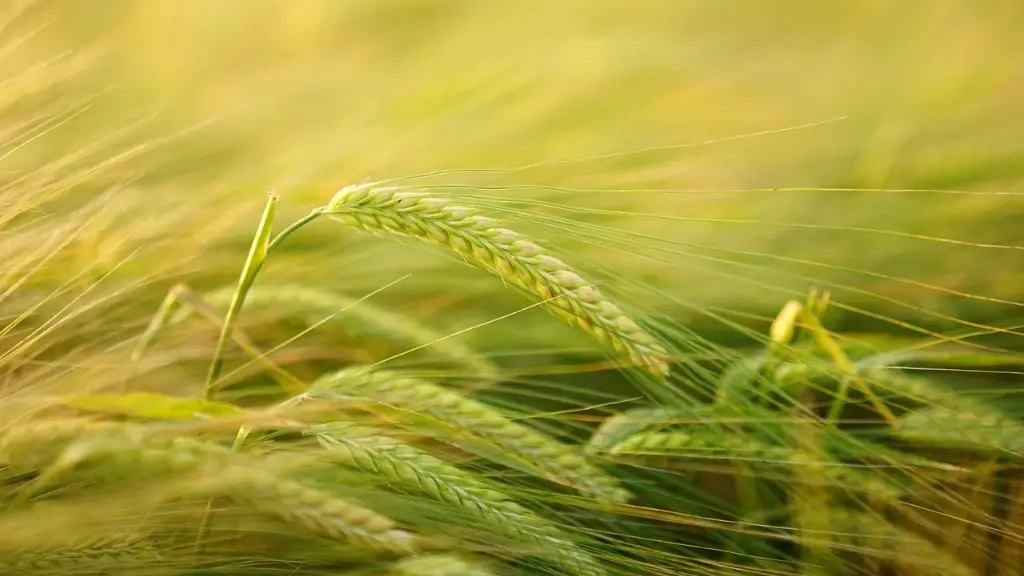Agriculture plays a huge role in the state of Florida. It is the backbone of the state’s economy and is the reason for much of its success. The most popular agricultural products grown in Florida are citrus, sugar cane, peanuts and tobacco. However, Florida has much more to offer in terms of agriculture than just traditional crops. The state has a diverse range of crops, produce and livestock that plays an integral role in the success of the agriculture industry in Florida.
The production of vegetables, such as tomatoes, squash, beans, and eggplant, is one of the main agricultural products in Florida, providing locals and tourists alike with fresh, nutrient-dense produce. In addition to vegetables, the state is home to a variety of fruits, including oranges, strawberries, and grapefruit, helping to make Florida the third-most productive state in the nation for citrus fruits. Moreover, sugar cane is also a major agricultural product, with hundreds of thousands of metric tons being produced in Florida each year.
The agricultural industry in Florida is heavily reliant on the support of its thousands of farmers, providing jobs and stimulating the economy. Florida farmers use advanced systems and techniques to optimize the efficiency of their crops, resulting in larger yields and greater profits. This includes a range of modern practices, such as nutrient management, integrated pest management, and soil conservation. As a result, Florida’s farms continue to remain profitable even in times of economic difficulty.
The state of Florida is also home to a thriving livestock industry, ranging from cattle and sheep to pigs, turkeys, and geese. The grazing lands of the state supply an ample amount of forage for the thousands of animals raised here, making it an important component of the state’s agricultural industry. Further, the many dairy farms found in Florida are devoted to milk production and other related products. Overall, it’s clear that agricultural production in Florida is a major contributor to the state’s economy.
Moreover, Florida’s tropical climate and abundant sunshine make it the perfect place to cultivate an array of unique crops. Avocados, mangoes, and limes are just a few of the crops that are grown here, with their crops export to other states and countries. Aquaculture, while relatively small in scale, is also becoming a popular product within Florida’s agricultural industry, with a variety of crustaceans, aquatic plants, and fish being raised in the state’s vast network of ponds and lakes.
Finally, Florida is home to a unique variety of local honey and other honey-based products, such as beeswax, propalis, and royal jelly. Beekeepers in the state raise thousands of bees for harvest, which can be used to create delicious treats and medicinal remedies. The honey industry in Florida is an important addition to the state’s agricultural industry and is growing rapidly.
Floridas Forestry
Another important part of Florida’s agricultural industry is the forestry sector. This can be further divided into two key components: the timber industry and the paper industry. The timber industry is the heart of Florida’s forestry industry, with logging, wood production, and wood products comprising the bulk of its services. The forests of the state provide an abundant source of timber, which is used for framing, furniture production, and other related services. The paper industry is also an integral part of Florida’s forestry sector, making use of the state’s ample timber resources for paper production and printing.
Florida is home to a wide variety of tree species, with the most common being pine and cypress. These trees are essential for the production of wood and paper products, as well as providing important ecological benefits such as oxygen production, carbon sequestration, and soil protection. The state is also home to a vibrant nursery industry, which produces a variety of plants and shrubs for sale, while supplying landscaping services as well.
Florida’s forestry sector is also a major contributor to the state’s overall economy, providing jobs and stimulating the local market. The state’s forests are home to a range of species, including birds, mammals, reptiles, and amphibians, making them important habitats for a variety of wildlife. Moreover, these forests are a valuable resource for outdoor recreation such as camping, fishing, hunting, and hiking.
Moreover, the forestry sector of Florida has a long history, with the first settlers taking to the forests to clear and cultivate land for farming. In recent years, however, the sector has shifted from its traditional role of providing wood and paper products to become a leading actor in sustainable forest management practices. These practices include measures such as reforestation, habitat preservation, and biodiversity conservation.
Floridas Aquaculture
Aquaculture is an important part of the agricultural industry in Florida; it provides thousands of jobs and a significant source of income for the state. Aquaculture is the production and harvest of aquatic organisms, such as fish, crustaceans, mollusks, and aquatic plants. The main species cultivated in Florida include trout, tilapia, blue crabs, and American oysters. Aquaculture in Florida has a long history, with the first commercial operations being established in the 1800s.
Today, aquaculture operations in Florida continue to provide essential services to the state, such as fresh seafood for consumption and for export. The aquaculture industry is also an important part of the local economy, providing jobs and income for the thousands of people employed in the sector. Additionally, aquaculture operations are also important in terms of environmental protection and preservation, as they provide an important habitat for a variety of aquatic species.
In order to meet the increasing demand for seafood, the aquaculture sector in Florida has grown rapidly in recent years. The state is home to many fish and shellfish farms, which provide a regular supply of seafood to the local markets. These operations also provide a variety of services, such as restocking lakes and ponds, stocking new rivers and streams, and conserving wild stocks of fish. As a result, Florida’s aquaculture sector has become a vital component of the state’s economy.
Modern aquaculture in Florida has also become more efficient in recent years, due to advances in technology and aquatic science. For example, many fish farms in the state now use advanced systems for food production, such as using fish feeds containing controlled levels of nutrients. In addition, fish farms have also implemented a range of environmentally-friendly practices, such as using filtered water systems, which reduce the risk of polluting local waters.
Furthermore, the aquaculture industry in Florida is highly regulated, with various organizations overseeing the production and safety of seafood products. These organizations have the authority to regulate the size of fish farms and the quality of their seafood products, while also enforcing certain environmental standards. Despite these regulations, the aquaculture industry in Florida remains a major contributor to the state’s overall agricultural industry.
Floridas Natural Fertilizers
Natural fertilizers play a crucial role in Florida’s agricultural industry. These fertilizers can be used to improve yields and quality of crops while also providing a sustainable solution to the needs of the agricultural sector. Natural fertilizers are an efficient and cost-effective way to sustainably produce food in the state, as they provide the essential nutrients needed for growing crops without relying on synthetic chemicals.
Florida is home to an abundance of natural fertilizer options, such as compost, animal manures, and crop residues. These fertilizers can be used to restore and enrich the soil, as well as providing essential nutrients for crops. The animal manures in particular are an excellent source of nutrients, as they are rich in nitrogen and other essential minerals. Furthermore, composts can also be used to improve the structure and drainage of soils.
In addition to supplying essential nutrients, natural fertilizers also help to improve the soil’s fertility and provide carbon inputs, which are important for the overall health of the soil. Moreover, natural fertilizers can also be used to provide a variety of additional benefits, such as providing pest control and reducing soil erosion. As a result, the use of natural fertilizers in Florida can improve the health of the soil and provide a more efficient, cost-effective solution to the state’s agricultural needs.
In order to maximize the benefits of natural fertilizers in Florida, it is important to understand how to properly apply them. This includes the use of correct application methods, such as spreading or incorporation the fertilizer into the soil. It is also important to monitor soil conditions, as fertilizers can be damaging if applied in the wrong amounts. Moreover, it is essential to conduct regular soil tests to make sure that the fertilizers are properly absorbed and that the correct amounts are applied.
Floridas Irrigation
Agriculture in Florida is heavily dependant on irrigation for crop production. Irrigation is the process of applying water to agricultural lands to ensure adequate water supply for the crops. This is essential for the successful growth of a wide variety of crops, such as vegetables, fruits, and nursery plants. In Florida, there are two main sources of irrigation: surface water, such as rivers and lakes, and underground water.
Underground water is the preferred irrigation source in Florida due to its availability and quality. It can be obtained from either wells or aquifers, and is typically the most cost-effective way to irrigate crops. In addition, underground water is generally clean and free of pollutants and pollutants, which makes it ideal for agricultural use. However, due to the over-extraction of underground water for irrigation and other purposes, there are restrictions in place in Florida to ensure that this water is responsibly managed.
Surface water sources can also be used for irrigation in Florida, though this is much less common. Rainwater is the most commonly used surface water source, as it is abundant and free of pollutants. However, due to the seasonal nature of rainwater, this source of irrigation can be unreliable. In addition, due to the high cost of infrastructure and licensing fees, surface water is typically used only for supplemental irrigation.
In order to maximize the benefits of irrigation in Florida, it is important to use the correct irrigation systems. Drip irrigation and low-pressure sprinkler systems are highly popular, as they are efficient and cost-effective. These systems allow for precise adjustment of water application, which can help improve crop yields and quality. Additionally, these systems also require less water and are less likely to contribute to soil erosion.
Irrigation is essential for successful agriculture in Florida, and the state is home to a wide range of irrigation systems and products. These include pumps, sprinklers, and valves that can be used to provide the most efficient irrigation solutions to farmers. Furthermore, the use of technology in irrigation, such as soil moisture sensors and weather monitoring systems, has also become increasingly common in order to ensure optimal water application.
Floridas Greenhouses
Greenhouses are a vital part of Florida’s agricultural industry, allowing the production of crops that wouldn’t otherwise grow in the state’s climate. Greenhouses provide a controlled environment in which crops can be grown regardless of the season, resulting in larger yields and higher quality produce. Greenhouse cultivation is especially beneficial in Florida, as the unpredictable climate can make it difficult to forecast or plan for season changes.
The use of greenhouses in Florida allow for year-round crop production. This results in higher yields and more reliable harvests of a variety of crops, enabling farmers to plan reliably for market demands. Furthermore, greenhouses also allow for the production of crops that wouldn’t ordinarily grow in Florida, such as tomatoes and cucumbers. This allows for the cultivation of a wide variety of crops in the state and increases the range of produce available for sale.
In addition to their traditional uses, greenhouses have also become increasingly popular for purposes such as hydroponic systems, nursery services, and fish farming. Greenhouses are an ideal environment for these activities, providing a controlled and controllable climate to optimize production. With the use of technology, such as sensors and meters, greenhouses can be precisely adjusted to provide the ideal climate for whatever activity is taking place inside.
The use of greenhouses in Florida provides many advantages to the state’s agricultural sector. They allow for the cultivation





